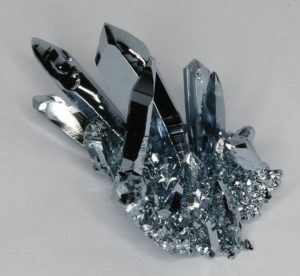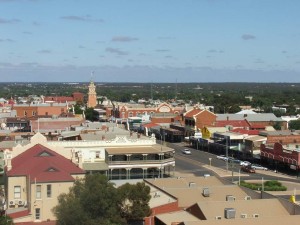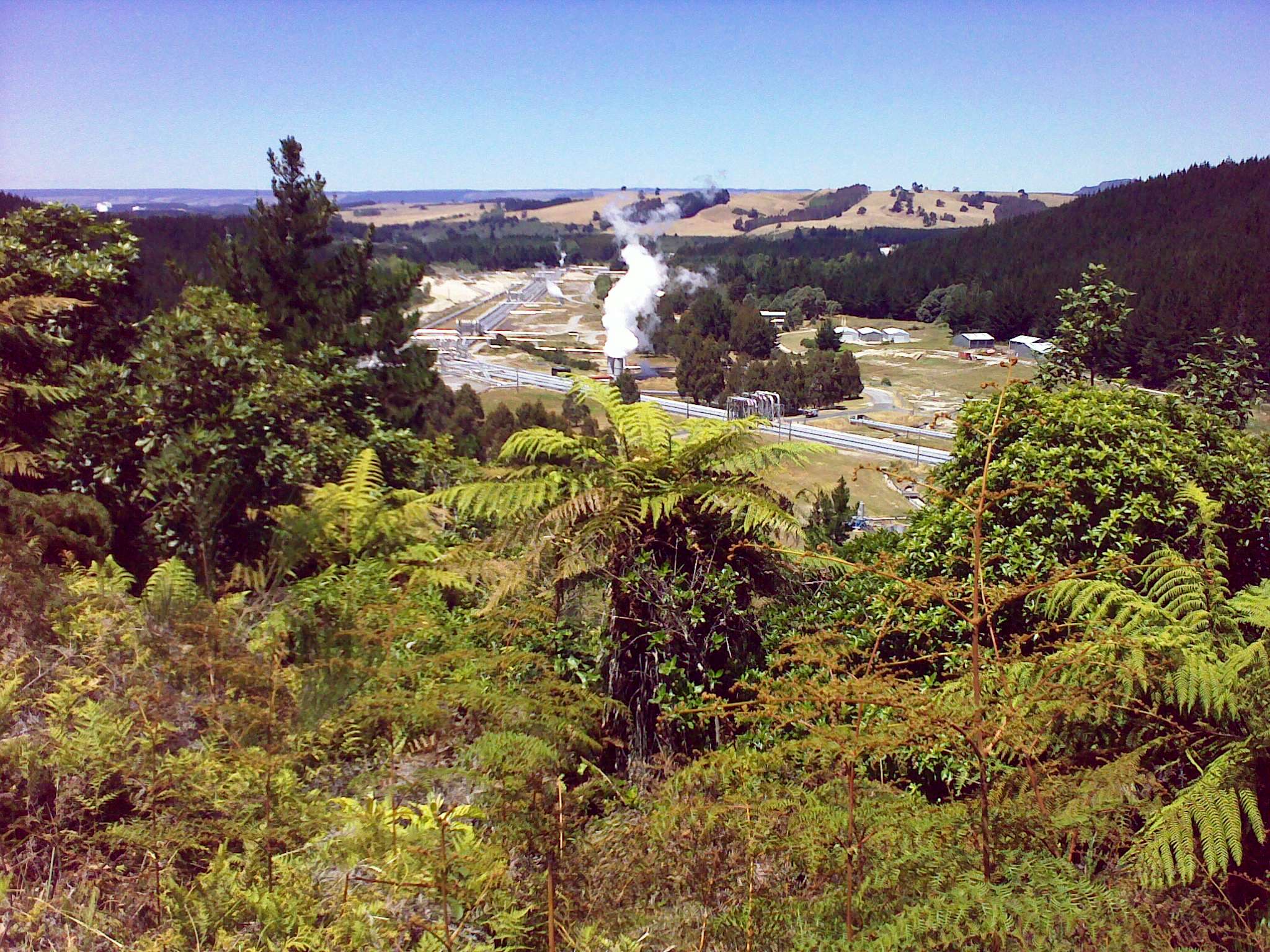In terms of abundance in the Earth’s crust, the rarest metals are: gold, platinum, osmium, iridium, palladium, ruthenium, rhodium, tellurium and rhenium. These metals are different from Rare Earth Elements, which aren’t actually rare in terms of abundance, but are rarely found in concentrated ore deposits.
Most of us have heard of gold and platinum, but the other seven are truly rare. What are they, where are they found, and why do they matter?

Platinum Group Metals
Osmium, iridium, palladium, ruthenium and rhodium are typically grouped with platinum and known as platinum-group metals or elements (PGMs or PGEs). These elements are rare on earth, but abundant in the rest of the universe. PGMs are all chemically similar to each other and can substitute for each other in some applications. PGMs have a wide variety of uses, but are primarily known for their use in automotive catalytic converts, jewellery, investments and increasingly in advanced electronics.
The four main types of economic PGM mineralization are:
- Ancient (Precambrian) layered intrusives e.g. Bushveld Complex, South Africa
- Meteor impact craters e.g. Sudbury, Ontario
- Intrusive sill structures associated with nickel-copper ores e.g. Norlisk-Talnakh, Russia, Jinchun, China
- Placer deposits or alluvial (stream) gravels.
Osmium

Osmium is the densest stable element. The blue-grey metal is highly reflective and is used in space mirrors and other industrial mirror applications. It occurs as an alloy most often with iridium and platinum. Like iridium, it’s recovered as a by-product from copper-nickel mines.
Previous industrial uses for osmium have included fountain-pen nibs and record player needles. Today it is used in both electrical and optical microscopy. It is also an important oxidant for industrial applications. Additionally, osmium plays a role in geochronology–dating rocks.
Iridium
Iridium is found associated with osmium as the alloy “iridosmium” (or “osmiridium” if osmium dominates). Like the other PGMs, it is typically mined as a byproduct of nickel and copper production. Important deposits of iridium are located in the U.S., Brazil, South Africa, Russia, Myanmar and Australia.
Iridium helped answer one of geology’s biggest puzzles – what happened to the dinosaurs? The rapid destruction of the dinosaurs occurred around 65 million years ago and marked the end of the Cretaceous era. The cause of the dinosaur extinction has long intrigued scientists. The Alvarez Hypothesis proposed that a thin layer of iridium-rich clay represented the impact of a colossal meteorite, which radically changed the climate and ended the era of the dinosaurs. As iridium is rare on earth, but much more abundant elsewhere in the universe, the wide-spread, iridium-rich clay is evidence of the pulverisation of something very large of extra-terrestrial origin. Iridium anomalies have since been identified in a number of meteor impact sites.

Palladium
Palladium is found in similar mineral settings as other PGMs. Most palladium is used for catalytic converters, but other uses include jewellery, dentistry and surgical instruments. Palladium is also an exchange traded metal (along with platinum, gold and silver)
Ruthenium and Rhodium
Both ruthenium and rhodium are by-products of other PGMs and copper-nickel ores, with tiny production figures.
Ruthenium is used to harden platinum and palladium alloys to make highly resistant electrical contacts. It is also used as a plating metal. Rhodium has similar applications but is much more expensive than ruthenium, which is therefore usually used in preference. Since it is very brittle, it is usually purchased as a powder instead of bars or coins (though some coins and bars are available).
Rhodium has also been exchange traded and is currently the most expensive metal, currently trading around $20,880.
Tellurium
The town of Telluride, Colorado, was named after a hoped-for discovery of tellurium. Unfortunately the big strike there never occurred. Tellurium is associated with gold as the minerals calaverite and krennerite, but can also be found as a native metal.

In the late 19th century during the initial gold rush in Kalgoorlie, Western Australia a grey, dull rock was discarded as waste and re-used to improve the roads and footpaths of the booming town. Several years later the streets were dug up again when the “waste” was identified as calaverite. That was the only time ever that a boom town’s streets were paved with tellurium!
Tellurium is most often found combined with gold, copper and lead. Most production is from as a by-product of refining of these metals, particularly copper. The supply of tellurium varies depending on the quality of the ore it’s recovered from. Processing plants may not recover the tellurium from the waste stream unless it is economically viable. This makes it particularly difficult to estimate tellurium reserves.

Tellurium is in demand for fibre optic cables that modern telecommunications depend on. It is also used in alloys to improve malleability, and in the semi-conductor industry. It is also a key component of cadmium-tellurium photo-voltaic power cells.
Rhenium
Identified in 1925, rhenium was the last stable element discovered. It is also one of the rarest elements on earth. The main mineral source for rhenium is molybdenite. Chile is the world’s largest producer of rhenium from its porphyry copper deposits.
Rhenium, like the PGM minerals, on earth but abundant in the rest of the universe. This is because as the planet cooled rhenium formed volatile hydrides which were lost to space during planetary formation.
Rhenium is important for high-temperature alloys which are in demand from aerospace and petroleum industries. Issues are price volatility unstable supply, demand, speculation and hoarding.
The Economics of Rare Metals
While a few of these metals (Palladium and Rhodium) are market traded, the others are traded with the other PGMs, precious metals, or prices are negotiated directly with suppliers. Prices of these metals may fluctuate wildly. Small changes in either supply or demand results in proportionally large distortions of their markets. Indeed, supply chain disruptions caused by the COVID-19 pandemic caused prices of several of these metals to skyrocket in early 2021, including iridium and rhodium.
Some have suggested that demand for these metals may be the impetus of the first commercial space mining operations. Meteorites would make an excellent source of these minerals, as long as we figure out a way to harness their resources without going the way of the dinosaurs.









